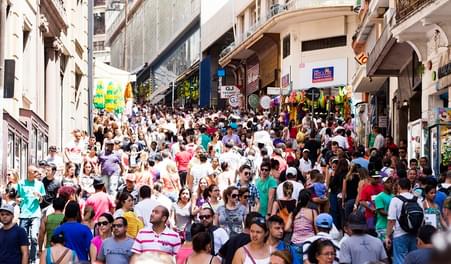Yes, the interest rate is not in the right place. This is why the Central Bank is acting. There are good chances the Selic rate will reach single-digit territory in the coming months, possibly leading to a renewed economic growth cycle. However, this is not the answer for kick-starting growth in the real economy. Monetary policy is a short-term instrument, and has its limits.
The recommendation to force the Selic rate down to global levels (for example, the average of Chile, Colombia, Mexico and Peru is 5.25%) needs to be rethought. While on the one hand it might make sense for the Central Bank to “test” lower interest rate levels, the room for experimentation is limited. The Bank lowered the Selic rate to 7.25% in 2012. It lasted seven months. Inflation accelerated and the Bank eventually had to raise the rate to 14.25%. The cost was dear.
What makes a country’s interest rate structurally low is not the will of the Central Bank, but rather a favourable economic environment. The high interest rate, although causing many problems, is much more the consequence than the cause of the economy’s fragilities.
The economic system is full of distortions that make the country more vulnerable to inflationary shocks. The low quality of the fiscal regime is perhaps the main source of these distortions. We have a regime that generates doubts regarding the government’s capacity to honour its debts, which reduces the country’s saving rate and penalizes its potential for long-run growth, by poorly allocating public resources and distorting the tax burden. Improving fiscal policy is the main challenge.
The other argument is that the interest rate is high due to pressure from interest groups. In reality, the greater risk is not pressure for high interest rates, but instead pressure for low interest rates, due to the latter’s power to heat the economy in the short-run. For this reason, governments often pressure central banks for monetary impulses. As a consequence, the economic literature often discusses the need to shield central banks from political pressure, through their formal autonomy.
The capital market benefits when the interest rate declines, due in part to the stimulus to equity instruments. The so-called speculators, who play a fundamental role by guaranteeing the liquidity of the system, gain money from arbitrage. If they think the interest rate will rise, they bet on this, and vice versa. It’s a zero-sum game. A high Selic rate does not assure banks will make profits. The supply of credit shrank, in fact. Many banks have closed in Brazil.
Who gains from the high Selic rate is the end holders of public bonds, and half the internal debt is in the hands of individuals/companies, through investment funds and pension funds. Only 21% is in the portfolios of financial institutions, and this is not a relevant source of banks’ profits. The remaining holders are foreigners, the government itself, insurers, and others. The group is dispersed.
Investors’ gains are smaller than most believe, however. The payment of interest accounts for roughly 5.6% of GDP, but the effective gain is much lower, somewhere around 1% of GPD after deducting taxes (of around 20%) and inflation (an average of 7.3% in the past 4.5 years, which is the average maturity of the public debt). The big advantage is to enable protecting net worth against high inflation, something out of reach of the poorest people.
The theme is complex and butting heads with rent-seekers will not resolve the problem. The Selic rate has declined over the years, as the country has improved its fundamentals. This is the correct path. It takes work, but it’s the only way.









